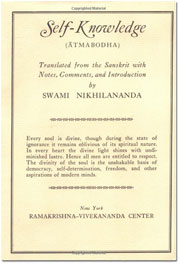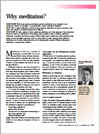Sitting quietly doing nothing has never been the western way. But what is meditation really – what does the mind do with itself? Where does it go? Is it like dreaming? For many meditation is a mystery and Webster’s defines it as:
1) to engage in contemplation or reflection
2) to engage in mental exercise (as concentration on one’s breathing or repetition of a mantra) for the purpose of reaching a heightened level of spiritual awareness
True meditation is actually a state where we are aware, but completely calm, relaxed and not involved in the thoughts. It’s difficult to describe if you have never experienced it, or only experienced a fleeting glimpse. Even people who study it aren’t always are sure what it is. Dr Manocha, while researching meditation, explored misconceptions held by those who research and prescribe meditation. His findings were that true meditation, in both practice and tradition, is mental silence, which is different from contemplation, relaxation and mindfulness, although these are often sold as meditation. Here are some of the differences:
Contemplation
In contemplation we direct our attention inwards, most often to ponder profound or deeper things. When we contemplate our mind is still thinking and processing but in a calmer, more introspective way. When a person goes into nature to ‘find themselves’ contemplation might be what they have in mind. Dr Manocha’s research showed we do relax more when contemplating because when we sit (or wander) quietly the chemical-electrical signals being sent through our body reduce naturally.
Relaxation
Relaxation is a state we all know and like because it feels nice being calm but alert. But learning how to relax when is doing many things can be challenging because our minds are still busy even if our bodies are not. But relaxing is the first step, because that enables us to let go of tension in both the body and the mind. Actually the state of meditation can occur spontaneously when we stop trying to direct our thoughts, so cultivating the ability to be “effortless” is key. The great thing about meditation is it helps us relax even more, which in turn helps us meditate more deeply. Actually just being alive feels very nice when we stop thinking thinking thinking and planning planning planning and tune into the beauty in the moment. Observing things that are also not thinking – things like trees, flowers, animals, the sky or sea – helps us tune into the state of being thoughtless. Try it and you’ll see how joyful this can be.
Mindfulness
It is natural for the mind to think and then react to these thoughts, and one thought leads to another. Mindfulness is a practice where one learns how to observe and watch their thoughts without reacting, thus becoming more ‘mindful’ of what the mind does. As a tool for introspection, mindfulness is useful for helping people be more aware of their mental habits, especially if negative thoughts or their overactive mind changes their mood. Mindfulness has become popular for helping people with mental health issues break the spell of what psychologists call ‘negative self talk’. Some connect the technique back to Buddhism.
Mindfulness, however, is not the same as mental silence, so it’s not meditation. Although the Buddha advised his disciples to observe the mind without being seduced by it, the goal of all ancient meditative practices is to go beyond the mind, to allow the awareness to rise above it. Traditional Indian scriptures refer to this state as ‘non dualism’ or ‘self realization’, where one realizes there is no separation between their meditative self and an all pervading purer state of consciousness. So in meditation we merge with something greater than ourselves and, in turn, realize our potential to be so much more than our thoughts or worries. Our awareness turns to things that are more eternal, more balanced. True meditation is very joy giving. This sense of joy establishes itself and expands when we experience a truly silent meditation.
Mental Silence ~ Thoughtless Awareness ~ Mind Emptiness
“Sometimes I sits and thinks and sometimes I just sits” said Pooh
These pictures show how thoughtless awareness and mental silence works. Imagine this wave is a picture of your thinking with each wave representing a stream of thoughts: 
When we are stressed or unhappy the mind is constantly working trying to solve a problem, or make plans for a future which does not yet exist. When we are busy, worried or very stressed we just have too many thoughts, some estimates being anywhere from 12,000 to 60,000 thoughts per day.
But here is a picture of our mind with no thoughts:
So normally we have a thought, it rises and falls, and then right behind it comes another, then another. It’s like we jump on the train of thoughts, take the ride, and can’t get off.
But if we relax, maybe contemplate a little bit, and then start to watch or witness that train of thoughts go by they slow down. When this happens our thoughts become slower, and the space between them widens.

Therefore by allowing our mind to rest in the silent spaces, these lengthen and we are able to drift into a place of being in the moment (not in our thoughts of the future or past). And even when there is the occasional thought, like a slow train drifting by, we see we don’t need to jump on it but just watch it, and let it pass. If we find it hard to stop thinking we can say “I forgive this thought” or “not this thought”. Sometimes we have to be a little strict with mind so it does not jump about and dominate us.
Being Effortless
In meditation we must learn how to be effortless, because if the mind is making an effort it will be thinking, and thinking is not meditation. Learning to let our minds relax and be effortless is possibly the biggest challenge. But just by allowing the meditative state to occur, we strengthen our connection with that state, and it becomes easier and easier to achieve and maintain. We then develop new mental habits, of calmness, of watching things instead of reacting to them and of being mentally relaxed and still throughout the day. Just by being present in the moment we relax. Some call this the state of flow or the zone. Children are often in this state just naturally.
In his research Dr Manocha found that after a few weeks of practice most people were able to learn to relax and experience mental silence much more easily. Just remember – meditation is effortless – if one can observe the mind thinking rather than being involved in the thoughts the body does the work for us. It’s like how a tree grows, it doesn’t think, it just does it. Being in thoughtless awareness throughout our day helps us enjoy things in a heart felt way and cleanse the brain so it’s more effective when we need it to be.
Here Katya Rubia from the Institute of Psychiatry, King’s College London, explains very clearly what meditation is and the proven health benefits of Sahaja Yoga meditation.
To learn more about the Vedic tradition of non dualism and self realization this book, a long ancient poem of praise to divinity, includes a very clear introduction on the tradition of non dualism.
Happy meditating!
Downloads



